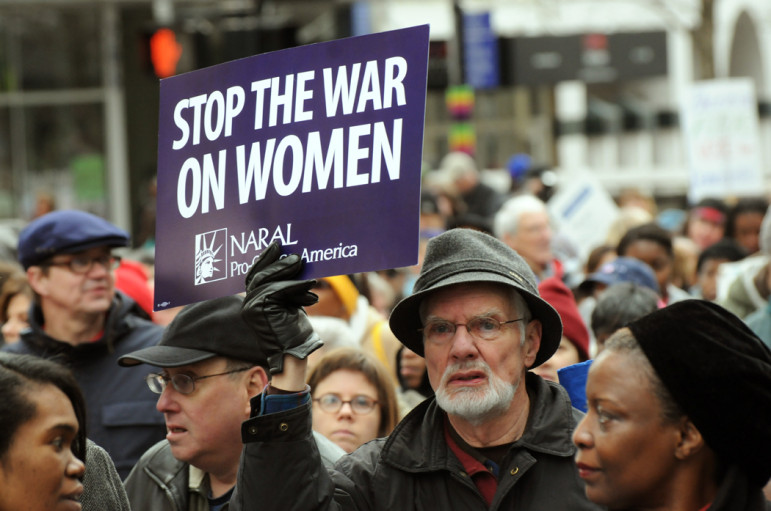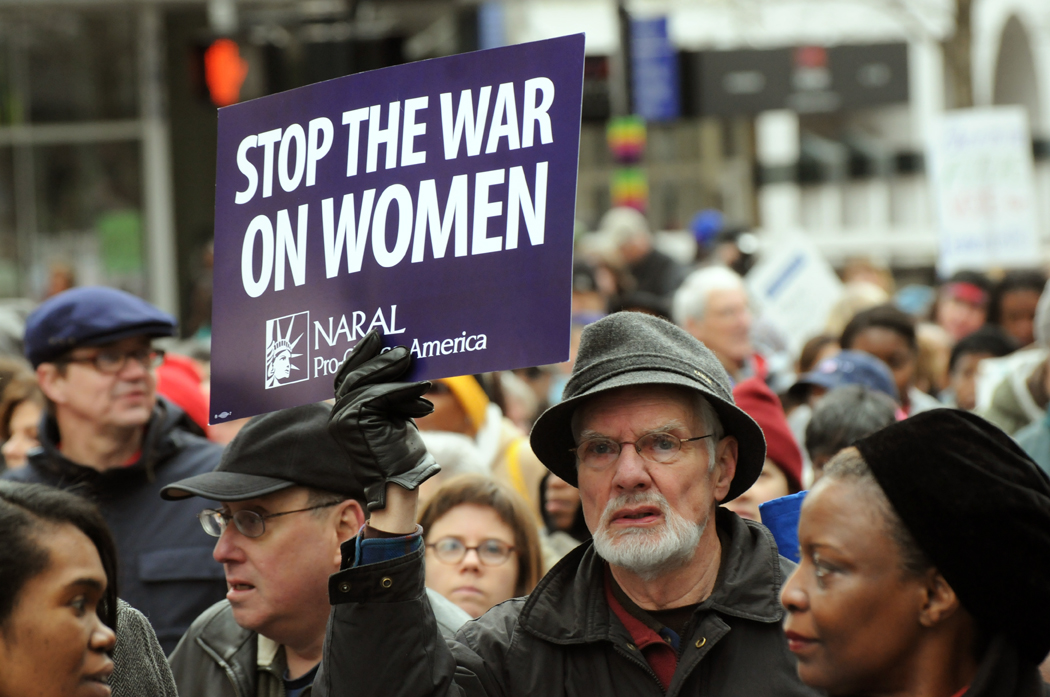Depending on where you get your news, there was somewhere between 15,000 and 100,000 people downtown for the Moral March last weekend. That’s a big discrepancy. And there’s a lot of politics behind it. Reporters at the march last weekend, myself included, dropped the ball and relied on march organizers or the permit filed with the city to get a sense of how many people actually showed up.
The march was the annual Historic Thousands on Jones Street, HKonJ for short, but was rebranded this year as the Moral March, building off the momentum of the weekly Moral Monday protests last year at the General Assembly.
I walked through the dense crowd assembled at the top of Fayetteville Street, facing a stage backed by the Old Capitol Building. There were a lot of people, but the question of “how many?” often comes down to a he-said-she-said back and forth. The number was markedly higher than previous HKonJ protests; that much I can say for sure.

Karen Tam / Raleigh Public Record
Mac Hulslander, of Raleigh, carries a "Stop the War on Women" sign as an estimated 15 to 20,000 people march down Fayetteville Street.
I’ve walked through each one for the past several years and this had a different feel. A lot more people, and with them, a lot more energy. There were busloads from all over the state, but also from as far away as New York — based on my unscientific method of talking to random people and knowing people coming to town for the march.
USA Today said there were “between 80 and 100,000 people.” The Nation, a left-leaning news magazine, cited the same number but attributed it to the North Carolina NAACP.
Most of the local news organizations (looking at you, WRAL and N&O) cited the fact that Raleigh police didn’t offer a crowd estimate and the permit the NC NAACP requested with the police estimated 20,000 to 30,000 people would attend.
The Alamance Times quoted a local NAACP member there putting the crowd at about 30,000.
The N&O followed up Friday with a story about getting the numbers and put the question to a couple experts. They came up with 15 to 20,000, which sounds about right to me. But this came out almost a week after the fact.
These numbers do matter, as the N&O noted in its follow-up story. For every person at a march, you can expect at least a couple more voters behind that person unhappy with whatever’s at issue. Showing up in big numbers to tell politicians what you think is a tried and true tradition in American politics. It’s called petitioning your government, and it’s important, whether you’re talking about protecting the second amendment, legalizing pot, whatever.
I did not try to do a crowd count, and I regret that decision. Based on my previous experience, I can say that 80 to 100,000 is way too high, and news organizations should always expect the organizers of a march to inflate the numbers. In this case, the inflation was done with multiplication.
There are a couple generally accepted low-tech ways to count crowds. For a march, you stand in one place and count how many people it takes to fill up the street in a line across, estimating the average density of the number of people, then just stand there and count each line as they walk by.
For a rally, when people are all assembled on a street or park, you have to get up on top of a parking deck or look out the window of a tall building. You take a small section of the people gathered, again looking for an average density, count the people in that square and then multiply by the total area. You have to do this a couple times and then average your final numbers.
It always takes at least two reporters to cover a march or protest—one to do the actual reporting and another to do the crowd count.
There are, of course, much more technological ways to do this: satellite imagery, a camera on a weather balloon, all sorts of fancy tricks to get a better count. But I don’t know any newsrooms around here that can afford something like that. Apparently we can’t even afford putting another person on the street to do the crowd count.
But these numbers matter. Journalism is about getting the facts straight, and we all dropped the ball on this one.
